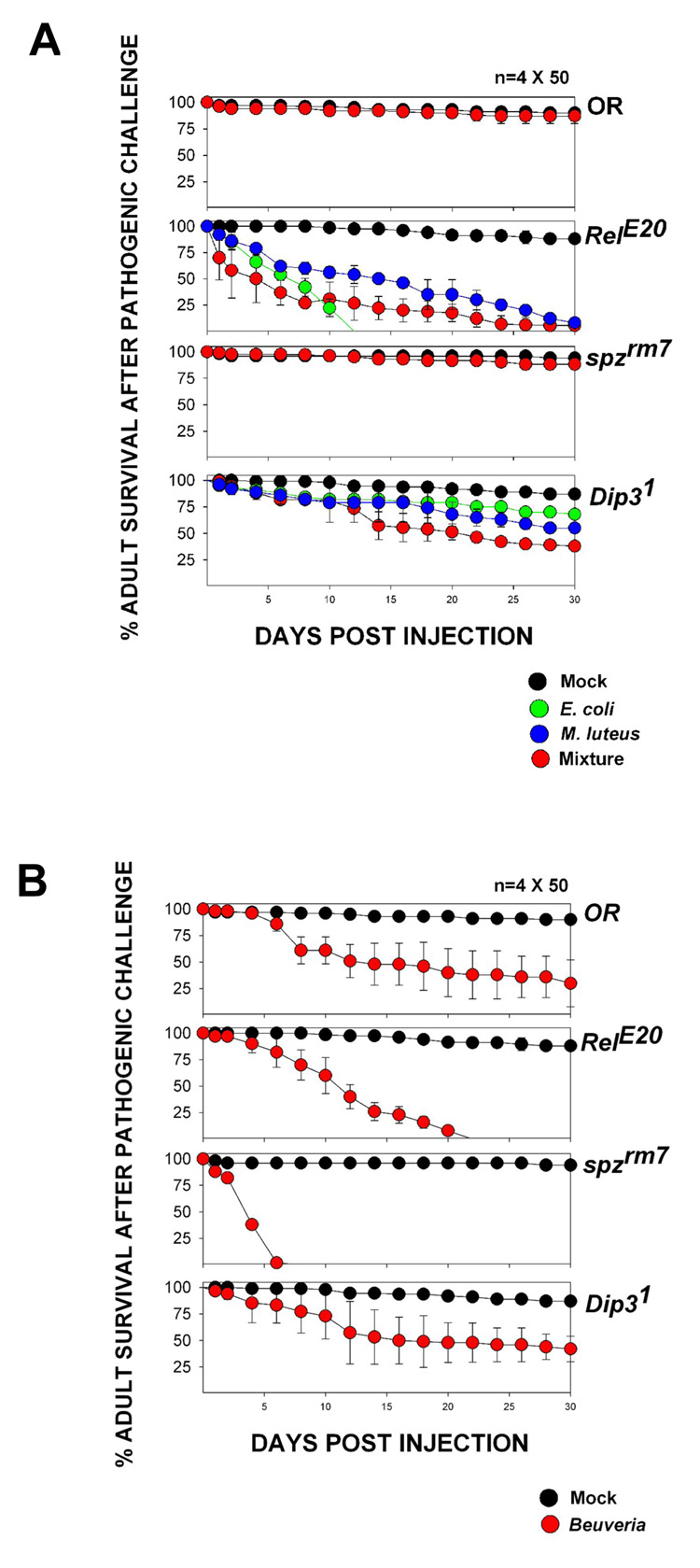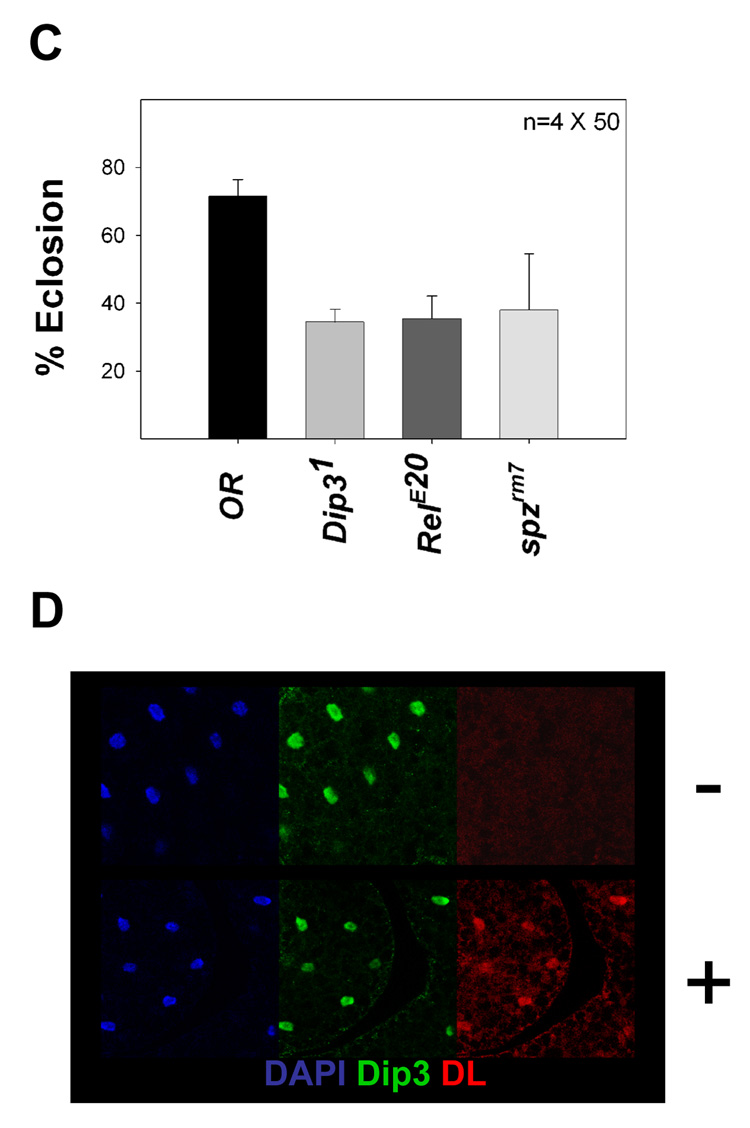Figure 4. Dip31 flies are sensitive to bacterial infection.
(A) Adult survival as a function of time post injection for Oregon R (wild-type), Dip31, RelE20, and spzrm7 flies injected with M. luteus, E coli, or a mixture of M. luteus and E. coli. “Mock injected” flies were pricked with a sterile needle.
(B) Adult survival as a function of time post injection for Oregon R (wild-type), Dip31, RelE20, and spzrm7 flies injected with the fungus Beuveria bassiana. “Mock injected” flies were pricked with a sterile needle.
(C) Eclosion rates of Oregon R (wild-type), Dip31, RelE20, and spzrm7 larvae injected with a mixture of M. luteus and E. coli. “Mock injected” larvae were pricked with a sterile needle. The wild-type injected larvae show significant lethality because of trauma to the larvae caused by injection. The decrease in eclosion relative to wild-type for Dip31, RelE20 and spzrm7 larvae was statistically significant (t-test; P<0.001, P<0.001 and P=0.008 respectively).
(D) DL is not detected in the fat body nuclei of an uninfected larva (−), but is accumulated in the fat body nuclei after injection (+). Dip3 nuclear localization is not affected by septic injury.


